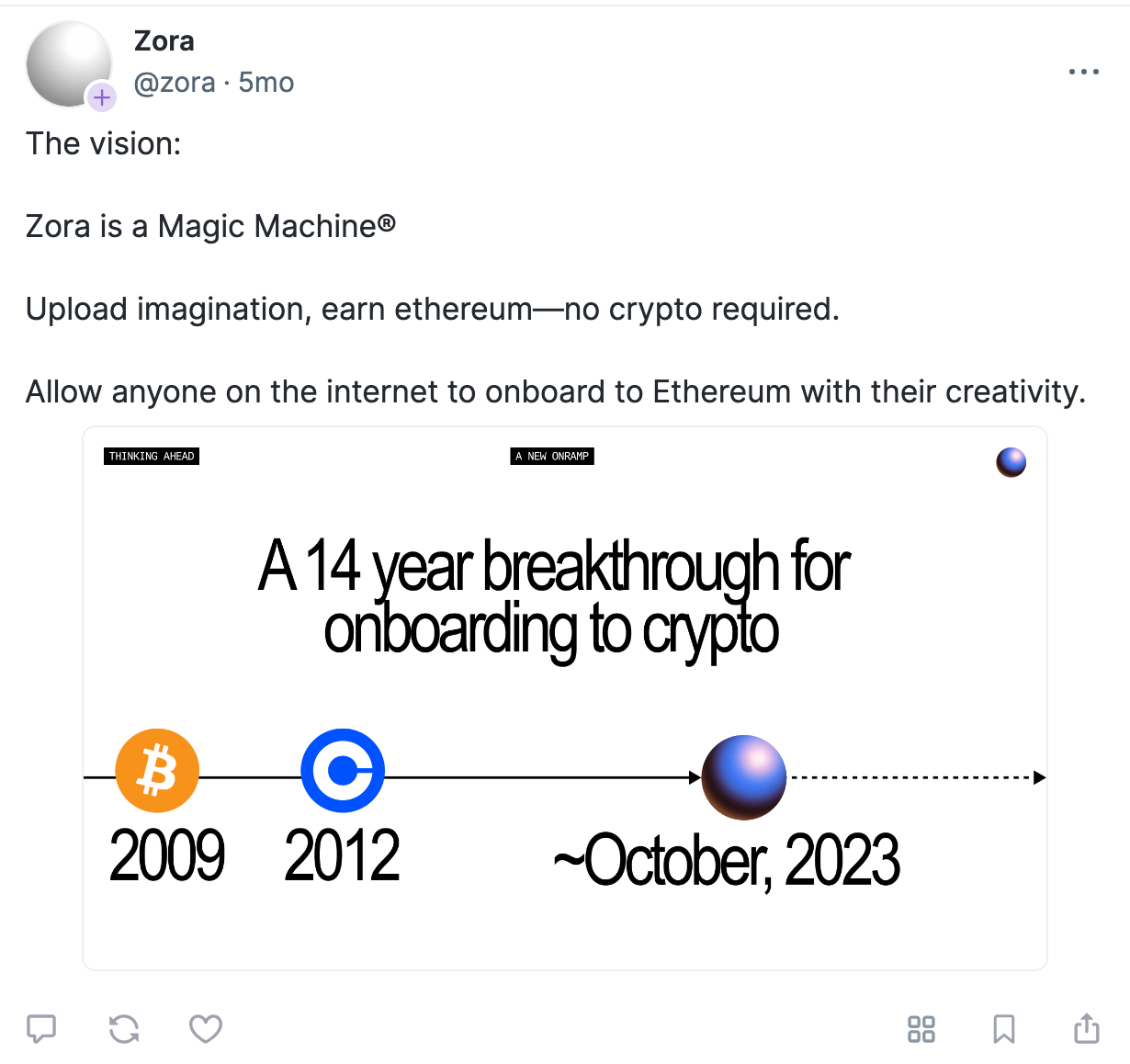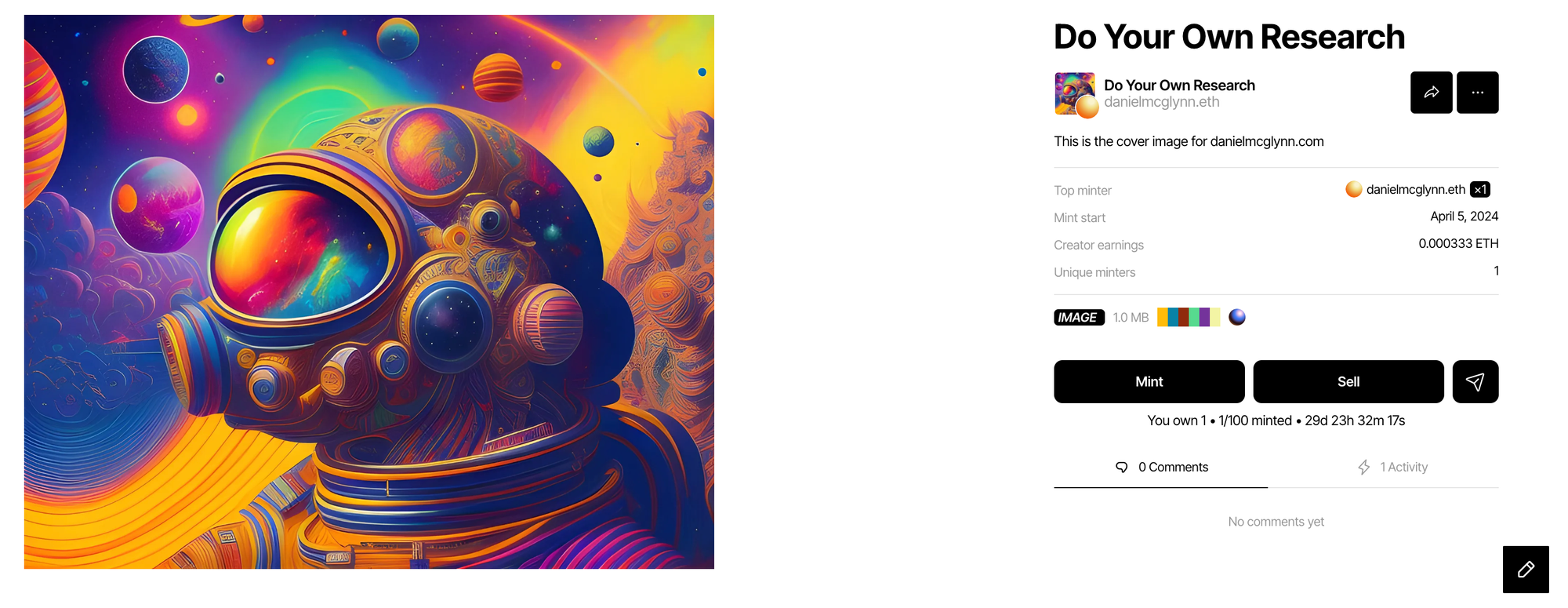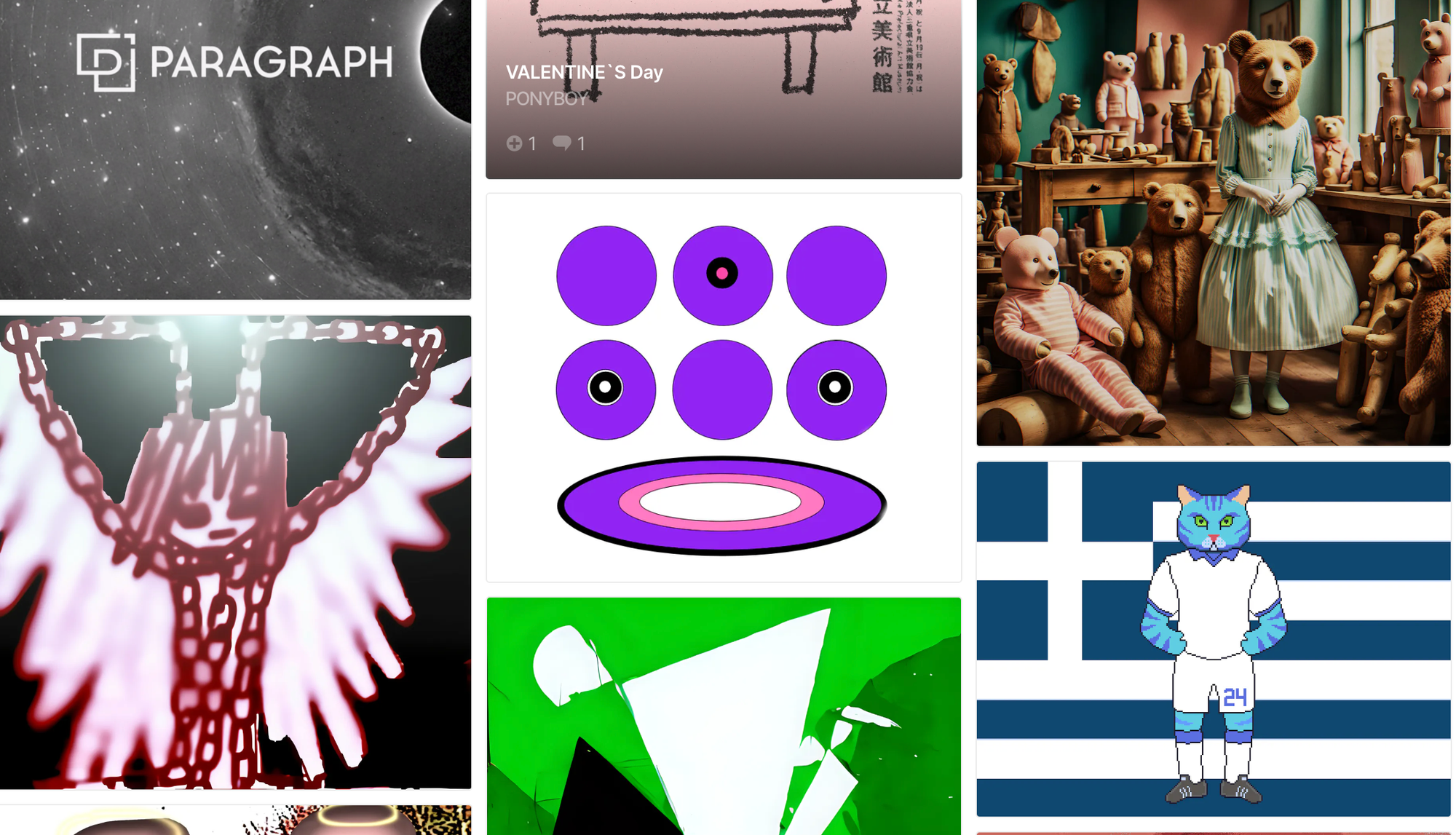What is Zora? Minting NFTs
This post takes a look at Zora, a network that makes it easy to create and mint non-fungible tokens (NFTs).

Zora is a layer two network that makes it easy (and cheap) to mint NFTs.
While there are many ways to mint and collect NFTs, Zora makes it simple to get started in just a few steps.
This is a follow-up to an earlier post that takes a deeper dive into NFTs (and gives more background about NFTs is and why they are important). It’s also part of a larger series about how to do more onchain:
This is the third part of a short series on what the move onchain looks like.
Check out the related posts here: March Madness onchain and Tracking fitness onchain.
It would be hard to talk about the migration onchain without focusing some time and energy on NFTs.
The big NFT bubble of 2020 and 2021 provided the first glimpse of the first foray into the possibility of building onchain communities and culture. But since then, NFTs have changed, alot. While most NFT creating and minting is still art-related, NFTs are also starting to pop-up in other contexts, like as a way to create and join communities or subscribe to publications.
In this post, we’ll spend time learning about Zora, which is a platform that is very much continuing in the same spirit as the early NFT pioneers by providing a platform for visual and digital artists. But what makes Zora different — and the whole point here — is that this time the move onchain will be easier and more seamless.
A big improvement in the onchain NFT experience is that artists, consumers, and collectors won’t have to be so consumed with gas fees or dealing with onboarding.
Connect a wallet
We need to cover some ground first before we start talking about collecting.
If we zoom out for a minute, it becomes clear that there are two major tools or mechanisms that we need to understand before we can move onchain.
The first thing we need is a web3-compatible wallet. There are several options here, but so far the three leaders in the space (this is based on observations while trying to connect to several onchain apps recently) are Metamask, Coinbase Wallet, and Rainbow Wallet. I will try to write more about each of these in the future, but it looks like you should be able to access several onchain apps if you set up one of those wallets.
Web3 wallets themselves have gone through a bit of an evolution recently. For a while, the dominant wallet use case was a hub for storing, receiving, or sending digital assets. Now web3 wallets are more like a portal into an entirely new (and rapidly evolving onchain experience).
Back in the web2 days, people need an email address or maybe a social media account to sign up for new internet-based apps or services. In web3, you will need a wallet to handle your credentials and details. The cool thing about a web3 wallet is that it’s infinitely more useful than using an email address or social handle to sign in for stuff.
A web3 wallet is like having a bank account, a passport, and an app store all in one place.

Back to Zora
The cool thing about Zora is that it is an easy-to-use visual interface for discovering new digital art.
It’s also really easy to take action, like creating an NFT or collecting other NFTs.
Here’s something I minted, it’s the cover image for this website:

Before I could mint the NFT, or create my own unique smart contract-based version of the image for my collection, I first had the create the NFT.
The process is as simple as uploading the image, selecting some settings, like the number of NFTs in the edition, the price, etc., and then signing the contract with my wallet.
The most time-consuming part of the entire process was figuring out the network stuff, but it’s not that difficult. And the best part is that the actual cost to mint the NFT was only a couple of cents to cover network fees. (And in my case because I am the creator and a minter, I actually got half of my minting fee back as a reward).
What I like about the Zora interface is that if something catches your eye you can click in and get more info about the work, about the artist, and the NFT’s mint history.
There’s also a comment section, which you can imagine over time could become more robust and more interactive, with the hopes that there could be back-and-forths between the NFT’s creator and the people interested in collecting it — or between the collectors themselves.
What makes Zora different?
Two things make Zora different from a user perspective.
The first is the overall experience from onboarding to scrolling for your new favorite art. While other NFT marketplaces can feel overwhelming, Zora has a very straightforward aesthetic. One analogy is that other popular NFT marketplaces are more like Facebook and can be overwhelming in their everything-all-at-once approach.
On the other hand, Zora is more like an Instagram feed that is designed to bring attention to images — or in the case of Zora to the NFTs, which at this point are all still visually dominant.

Another thing that makes Zora unique is the platform’s focus on rewarding both creators and community participants. NFT creators can decide to not charge anything to allow collectors to mint their work, but still be eligible for rewards through the platform.
Similarly, collectors are eligible for rewards just through the act of collecting and participating on the platform. This kind of earning while participating in a creative community model is cropping up in other onchain apps and services and will enable a new kind of internet business model that incentivizes both creation and consumption.
The takeaway
Part of what makes the internet such a dynamic and sometimes crazy place to be is that the big-picture internet is an information network driven largely by culture, memes, and trends. In a lot of ways, the ability to collect and share NFTs is a perfect match for the way the internet works.
Or maybe a better way to say it is that minting, collecting, and sharing NFTs is a perfect match for the way the internet should work because it fosters a mutually beneficial relationship that ultimately supports both creators and all of the elements that go into the human side of internet culture.